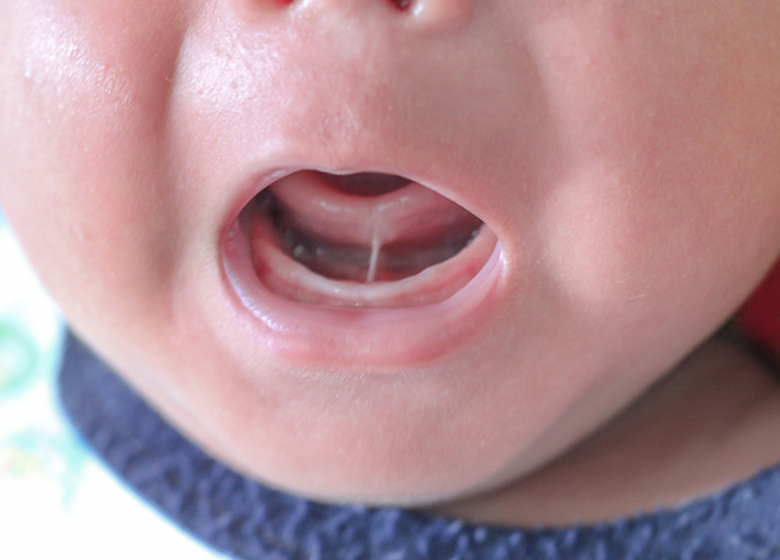Not many people are familiar with the medical condition called the tongue tie. Instead, they think of a person who is incapable of talking when flustered. However, tongue tie in babies is a medical condition which many babies have.
What is Tongue Tie?
Tongue tie in babies or ankyloglossia is a medical condition that occurs at birth that affects the development and function of the tongue. A thicker than normal lingual frenulum tissue binds the underside of the tongue to the mouth floor. The tongue can not move easily and it also has an impact on breastfeeding. When left untreated in infancy, it will affect the child’s ability to eat, speak, and swallow.
Symptoms of Tongue Tie in Babies
Here are a few tongue tie signs you should look for in your baby. These are:
- It may be difficult for your baby to lift her tongue to her mouth’s roof or even side by side.
- Perhaps your baby can’t stick out her tongue.
- It may seem heart-shaped or even notched when the tongue is stuck out.
- Can’t remain attached to the nipple for a longer period of time for full
- Feed with short intervals
- Not gaining the correct amount of weight
Such symptoms are due to your baby being unable to open their mouth wide enough to properly clamp on the nipple. Nevertheless, you must keep in mind that these symptoms could also be triggered by a simple issue of incorrect care for your baby, rather than by a tongue tie Speak about your problems with your doctor and ask for help.
Causes of Tongue Tie in Babies
Tongue-tie is congenital, meaning the baby is born with the disorder. It’s not something that’s going to develop after birth In most cases, before birth, the lingual frenulum separates from the tongue allowing for a free range of movement. Nevertheless, in infants who have a tongue tie, the frenulum stays attached to the tongue even after birth. Nobody seems to know exactly why this is going to happen. Many theories suggest that tongue-tie might be responsible for some genetic factors.
Types of Tongue Tie
Tongue ties are determined by the position of the tongue on the mouth surface.
- Class 1: This is the most popular tongue-tie type. The tie is at the tongue’s very tip.
- Class 2: the tie is farther back to the middle of the center of the tongue.
- Class 3: The tie is at the tongue’s base
- Class 4: Also known as Posterior Tongue Ties (PTT), the tie is below the mucous membrane and must be treated. This condition is generally mistaken for a small tongue.
Diagnosis
Tongue ties have to be identified by the health care professional of your child after a physical examination. The doctor must perform a series of tests based on appearance and mobility in the case of infants He will be in a position to make an informed diagnosis once your doctor finishes scoring everything.
You do not have to treat yourself under any conditions or encourage non-professionals to do so. Speak to your child’s doctor about your worries and clarify any questions that may put your fears to rest.
Treatment
Ankyloglossia or tongue-tie therapy is considered controversial as it is an unnecessary procedure that a child does not have to go through, some experts say. Many forms of tongue-tie can be resolved on their own in the first few weeks of your child’s life. Nonetheless, there are other experts who say that the condition should be corrected as soon as possible, right before you go home with your newborn The tongue tie does not cause complications in some cases. You must keep in mind that surgery to fix the tongue tie can be done at any age.
Procedure Of Tongue Tie Surgery
Surgery is the only way to fix tongue tie. Two kinds of tongue tie procedure are available – Frenuloplasty surgery and Frenotomy.
1. Frenotomy
The treatment is easier and can be done with or without anesthesia in the doctor’s office. Using a pair of sterile scissors, the doctor will snip the frenulum after an examination. Because the nerves and blood vessels there are very few, little, no pain will occur and there will also not be too much bleeding.
You can breastfeed your baby immediately after the procedure. The procedure is extremely safe and can lead to very few complications.
2. Frenuloplasty
Frenuloplasty treatment is a more extensive procedure under general anesthesia. It can be done if the frenulum is thick or further repair is necessary. Sutures are used to close the wound after the frenulum is cut. As the tongue heals, the sutures dissolved by themselves.
In all newborn babies, a tongue-tie occurs up to 2-4 percent. While many cases do not cause permanent effects, surgery is necessary in other cases. Although this condition does not endanger life, it can cause many lifestyle problems such as poor oral health and an inability to enjoy life.
Talk to your doctor about the different choices you have when it comes to the tongue tie condition of your child At the end of the day, what matters most is the quality of life of your child.
Also Read: Lip Tie In Babies: Symptoms & Treatment













